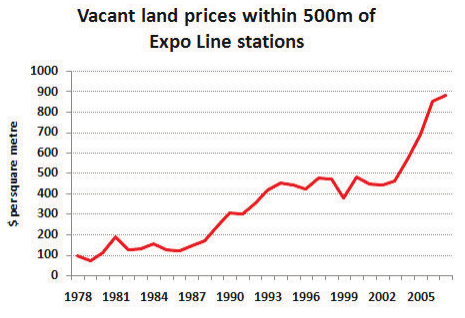Sightline Institute
HABITAT FOR HUMANITY GOES ALL IN FOR MULTIFAMILY HOUSING
But it needs relaxed parking mandates, widescale zoning reform, and public funding to make the most of the opportunity.
Author: Catie Gould
(@Citizen_Cate) on March 8, 2023 at 10:30 am
Excerpts:
According to Ryan Donohue, there is only one way to solve the shortage of affordable homes in Washington: widescale zoning reform that legalizes multifamily housing without onerous parking mandates, and an influx of public funding to match.
“If we don’t solve both of these problems, we will never be able to solve the housing crisis,” explained Donohue, the Chief Advocacy Officer for Habitat for Humanity Seattle-King & Kittitas Counties (“Habitat SKKC”), Washington’s largest Habitat for Humanity chapter.
All across Washington state, people need more homes of all kinds. One million more, the Department of Commerce estimated, by 2044. But local exclusionary zoning laws adopted by city and county governments between 1920 and 1980 have restricted homebuilders’ ability to meet demand. Bans on apartment buildings, townhomes, and duplexes, combined with costly parking mandates, have contributed to Washington having the fifth worst undersupply of housing in the United States.
But simply re-legalizing those lower-cost options won’t automatically put homeownership within reach for everyone, since prices have already been pushed so high. Since 2010, the median home price in Washington has increased 250 percent. “Subsidy is simply a necessity,” said Donohue. “If it’s going to be affordable at or below 80 percent area median income, it’s going to need public dollars.” In the absence of coordinated action by lawmakers, the shortage of affordable housing has grown into a billion-dollar problem, instead of just a million-dollar one.
That all might start to change this year. Legislators in Olympia have proposed a suite of pro-housing legislation this session that would increase housing supply through state zoning standards, reduce parking requirements and permitting barriers, increase renter protections, and reduce fees for affordable housing. Governor Jay Inslee is currently touring the state to build support for a $4 billion dollar housing bond.
HABITAT’S MOVE TO MULTIFAMILY
Habitat SKKC now focuses on townhomes and condo buildings. The cost of land has gotten too expensive to only build one home per lot.
More ambitiously, Habitat SKKC is currently planning the largest single-building Habitat project in the world, siting 58 new homes within eyeshot of the Columbia City light rail station in South Seattle.
But opportunities to build at that scale are hard to find. In Seattle, only 25 percent of the city’s residentially zoned land allows the lower-cost multifamily housing Habitat can build. It didn’t always used to be that way. One hundred years ago, multifamily housing was allowed throughout Seattle. But decades of zoning policies rooted in racial exclusion have confined these types of homes to discrete areas of the city.
Habitat has been an ardent supporter of housing bills like HB 1110, which would lift detached-house (or “single family”) zoning restrictions, re-legalizing duplexes and fourplexes in communities across the state.
A new report from the Urban Land Institute found that in the Puget Sound region, a third of the land within a half-mile of frequent transit is zoned exclusively for single-detached homes.
But that could soon change with Senate Bill 5466, which would legalize five-story buildings and lift parking mandates within a half-mile of frequent transit stations across the state. It just passed the Senate floor on March 1 with a bipartisan 40–8 vote in support.
__________________________________________________________________
Comment:
According to Habitat SKKC executive leadership, the only way to solve the shortage of affordable homes in Washington is through widescale zoning reform, and a large influx of public funding. We think there may be more…
Meantime, the non-profit has decided to focus on multifamily housing projects. The lot purchased for Habitat’s proposed 58-unit project near the Columbia City light rail station in South Seattle sold for over $1.3 million in 2022. It’s clear why Habitat SKKC is moving away from its traditional build mode of single-family homes, instead seeking sites for multi-unit buildings. The median home price in Seattle is currently $834,356. Taking this to be a typical single-family property, we can estimate the median lot value (calculated at a typical 40% of total value) at about $334,000 – far beyond the price range for a typical Habitat family. Compare this with the Columbia City multifamily calculus, at about $22,400 of land value per unit. The cost of building on a typical single-family lot is 15 times as much. No wonder “The cost of land has gotten too expensive to only build one home per lot”.
Washington’s 2023 middle housing bill HB 1110, of which Habitat Seattle is a supporter, would allow a range of lower-cost, more moderately sized home options like duplexes and townhomes within Washington cities. However, this is limited to transit oriented development. Within a half-mile of frequent transit, it would legalize up to six homes per lot. SB 5466 would increase the density allowance to five-storey buildings. Effectively, this means Habitat will have to limit its search for housing sites to transit station areas.
But there’s a problem with this strategy. The siting of stations on a new rail line and the concurrent upzoning that accompanies it, itself triggers a wave of land speculation driving up land values. In Seattle’s north LINK rail corridor, land values increased at the estimated rate of 15% annually during the pre-construction period of 2012 – 2016 (American Public Transit Association, and National Association of Realtors Oct. 2019). That’s six points above the historic trend growth rate.

Rail transit not only creates accessibility benefits to transit riders but also creates value for the owners of nearby properties in the form of higher site values. This can result in windfalls for land holders.
The land value premium in areas near transit stations around the world is well documented. Here’s an illustration of what land prices do when a rail station site is announced (from Vancouver, B.C.)
Our solution to Habitat SKKC’s dilemma is threefold:
1) Washington state should follow the initiatives that Minnesota and Oregon have taken, by expanding the ban on exclusionary single family zoning to include all of a city’s territory, not only station areas. Opinion research shows that Washingtonians broadly support a range of solutions to add more housing, including zoning reform to allow multifamily housing in single-family neighborhoods.
2) Institute a value capture mechanism such as Transit Benefit Districts a district circumscribing a transit station area designed to capture annual land value gains attributed to public investments in transit. This eliminates windfalls for land holders; annual levies are used to fund TOD capital improvements.
3) The land value tax (LVT) is a variant of the property tax that imposes a higher tax rate on land than on improvements. Shifting taxes onto land assessments reverses incentives, by discouraging land holding and speculation, while encouraging investment in buildings. A change to a land value tax system would enhance both the fairness and the efficiency of the property tax. This tax policy is usually more progressive than a traditional property tax, and has been shown to produce a variety of positive outcomes, including placing a downward pressure on land value inflation, increasing land availability for infill development, without diminishing overall tax revenues.
The notion that an influx of public funding such as a $4 billion housing bond is the only means to close the affordability gap is a narrow viewpoint. Subsidizing rents indirectly nourishes the private rental market with public dollars. Many owners will simply raise contract rents anticipating the income threshold gap will be narrowed with bond funds.
A revenue neutral LVT would help open up land for infill housing projects and restrain speculative land price rises. Supporters in California, Oregon, and British Columbia have proposed legislation to authorize LVT. Capturing land value, the unearned increment of real estate appreciation, is much superior to feeding more dollars into the furnace of land price inflation.
SKKC Habitat’s switch to multifamily projects will find the land tax to its advantage. Studies that simulate the effects of LVT consistently show that the biggest benefits go to multifamily housing types. Assuming the Habitat dwellings are condominiums, the owners would pay less in property taxes under the LVT system than under Washington state’s current tax system.
Tom Gihring, Research Director
Common Ground – OR/WA



